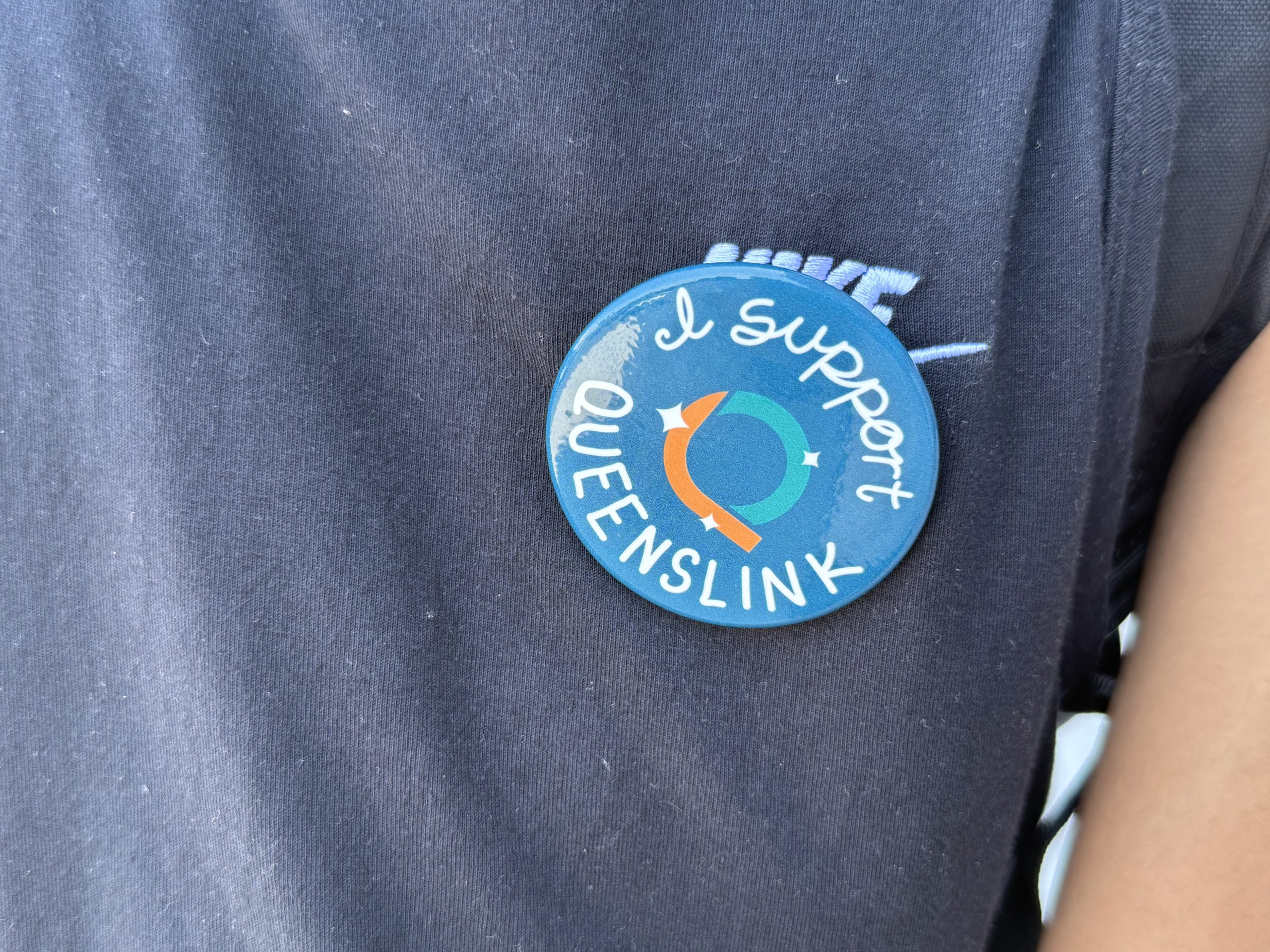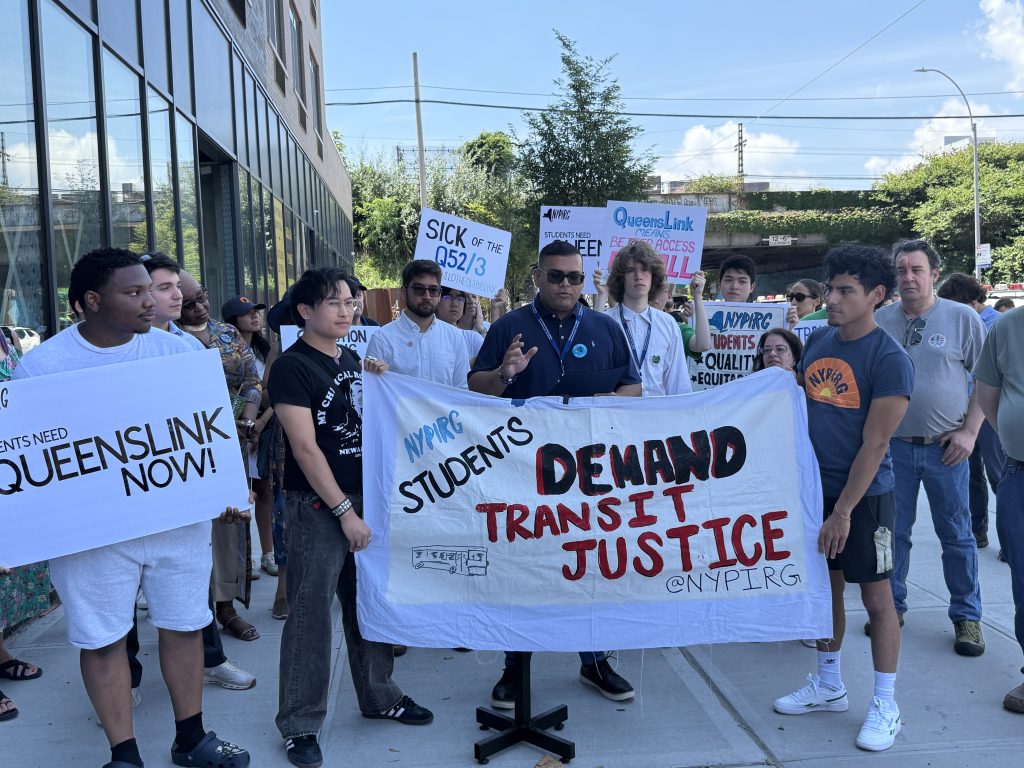
“Transit Deserts” in Queens Spark Student-Led Fight for Subway Line
By MOHAMED FARGHALY
mfarghaly@queensledger.com
Student organizers, transportation advocates, and local elected officials gathered on July 16 beneath the Long Island Rail Road (LIRR) bridge at 63rd Drive and Austin Street in Rego Park to call on Mayor Eric Adams and city leaders to support the QueensLink project, a proposed subway expansion that would reactivate a long-abandoned rail line in Queens.
The event highlighted the delivery of a petition bearing nearly 1,500 student signatures to a representative from the Mayor’s office, urging the city to fund and prioritize reactivating the Rockaway Beach Branch rail corridor for transit use rather than converting it exclusively into parkland. The rally coincided with the release of the student-led QueensLink Report, which lays out the urgent need for expanded transit options in Queens and outlines the potential benefits the project could bring to the borough.
Before the rally began, two supporters in the crowd joked with each other, “I’m a little late—I would’ve been here faster if only there was a train that would’ve gotten me here quicker,” a nod to the very project they were here to support.
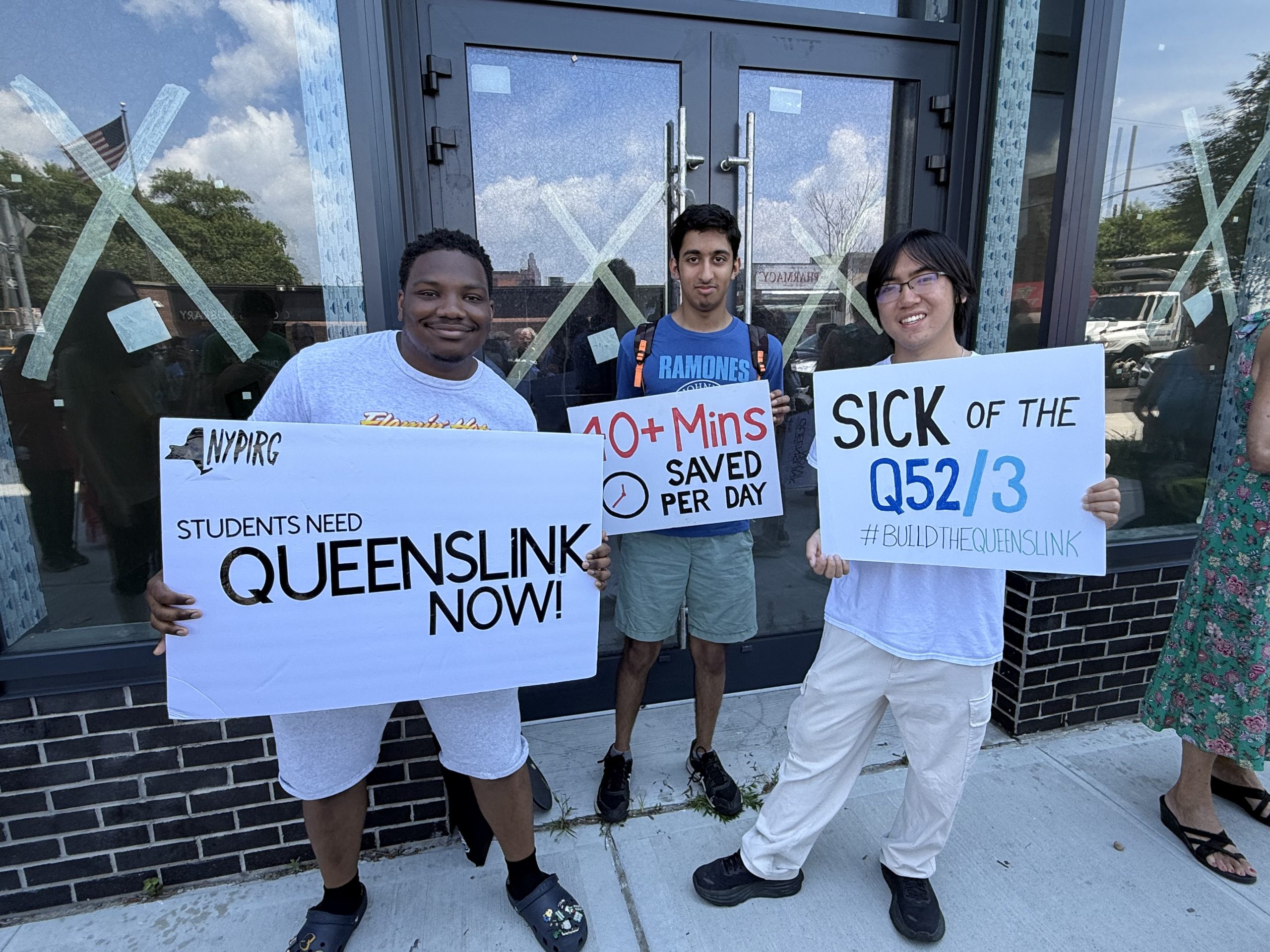
The QueensLink proposal calls for converting the 3.5-mile stretch of the unused Rockaway Beach Branch, which has been dormant for over 60 years, into a modern subway corridor that would extend the M train south from Rego Park through underserved neighborhoods, eventually reaching the Rockaways. Advocates say this would create a vital north-south connection, easing some of the longest and most burdensome commutes in New York City.
Matthew Paolucci, a recent Queens College graduate and organizer of the rally, emphasized that the QueensLink project is fundamentally about improving the lives of students and everyday commuters in Queens. Standing alongside fellow advocates, elected officials, and students, he described the project as an opportunity to “absolutely revolutionize transportation in Queens.” He pointed to the abandoned Branch just behind the rally site, stressing that it’s not just in need of a park but also a subway line to connect residents more efficiently.
Paolucci noted that the QueensLink Report includes personal stories from students who face commutes of over an hour to travel just a few miles, calling that “unacceptable in the world’s borough.” He outlined five future-facing recommendations, including stronger community outreach and a push to include the project in the MTA’s 2025–2034 Capital Plan. He also linked the project to broader infrastructure developments like the JFK Airport expansion and Van Wyck Expressway widening, warning that without investment in public transit, traffic and inequity will worsen. “We need mass transit that is not just going to meet the present needs, but it’s going to meet the future needs,” he said, ending with a rallying cry: “We want QueensLink, and we want it now.”
QueensLink supporters stress that the transit expansion would not only reduce commute times but also boost economic development, improve quality of life, and help reduce traffic congestion and carbon emissions. The project aligns with broader goals to build a more sustainable, equitable transit system across New York City.
Yet the QueensLink proposal faces stiff competition from the city-backed QueensWay plan, which would transform the same rail corridor into a linear park with walking trails, bike lanes, and green space. QueensWay has received significant funding, including $117 million in federal grants secured last year and $35 million from the Adams administration.
Kashif Hussain, Deputy Public Advocate for Infrastructure and Environmental Justice, spoke from his background in grassroots organizing, highlighting the Office of the Public Advocate’s longstanding support for QueensLink. “It just makes sense,” he said, noting that the project doesn’t force a choice between a park and transit. “The beautiful piece of this plan is you don’t have to choose one or the other.”
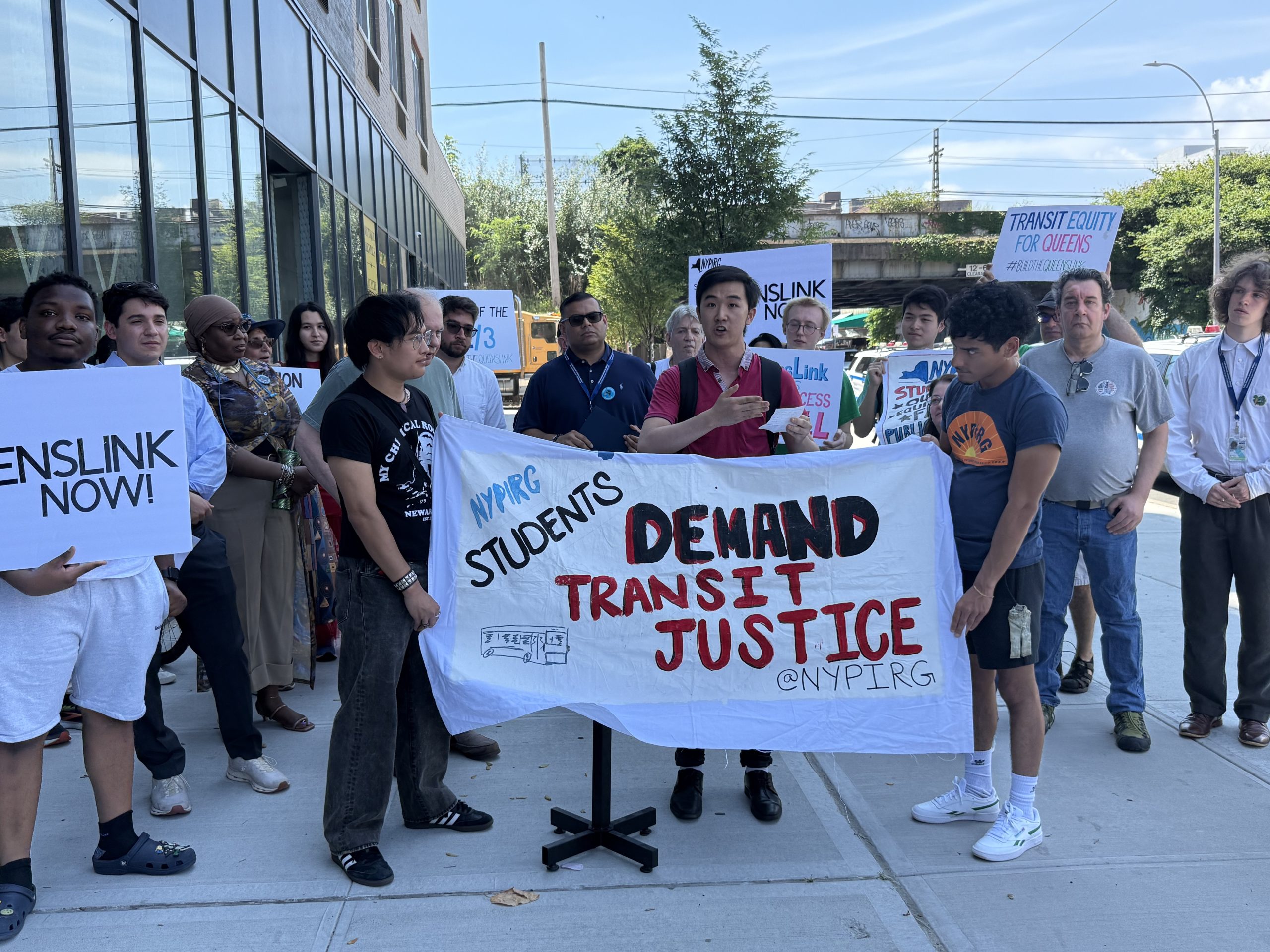
He emphasized the decades-long neglect of South and Central Queens, calling them “the largest transit desert” in the city. Hussain stressed that new transit investments deliver “economic growth, social benefits, equity and opportunity to uplift communities,” including easier access to jobs, schools, and family for residents and students.
Referencing a report from his office published in May, he said, “This project would make a significant impact on every Everyday Lives for the people of Queens,” arguing it would shift commuter habits away from cars and toward transit. He warned that building only a park now could block future transit options. “Mark my word on this one,” he said. “Losing this opportunity will do a major disservice to our most vulnerable communities.”
Hussain closed by urging the MTA to begin with an environmental impact study and to take “a deeper, more serious and more objective look at this plan,” framing QueensLink as a critical step toward “a more equitable New York.”
The QueensLink campaign has also faced financial hurdles. The Metropolitan Transportation Authority (MTA), responsible for overseeing such expansions, has cited high cost estimates as a barrier to reactivating the line. A 2018 MTA study pegged the price tag at $8.1 billion, though later revised it downward to $5.9 billion. QueensLink supporters argue those figures are inflated, with their own transportation consultants estimating the cost at $3.5 billion.
Rick Horan, Executive Director of QueensLink, opened by expressing surprise that such an obviously needed project still requires advocacy. “You would think that reactivating a rail line in the middle of a transit desert would be a no brainer. Unfortunately, it’s not,” he said. Horan emphasized the importance of collective involvement, saying, “We have to get involved in everything if we’re going to even make the obvious happen.”
He thanked attendees for showing up to support the project and especially acknowledged the efforts of students at Queens College and NYPIRG, who, along with QueensLink, stand to benefit most from improved transit. Horan praised the student-led QueensLink Report, calling it a strong contribution to the movement: “It just lends credibility to the fact that, you know, we may not need better transit in the future. We needed it yesterday.” He closed by affirming the group’s commitment to the cause: “We look forward to continuing the fight with you.”
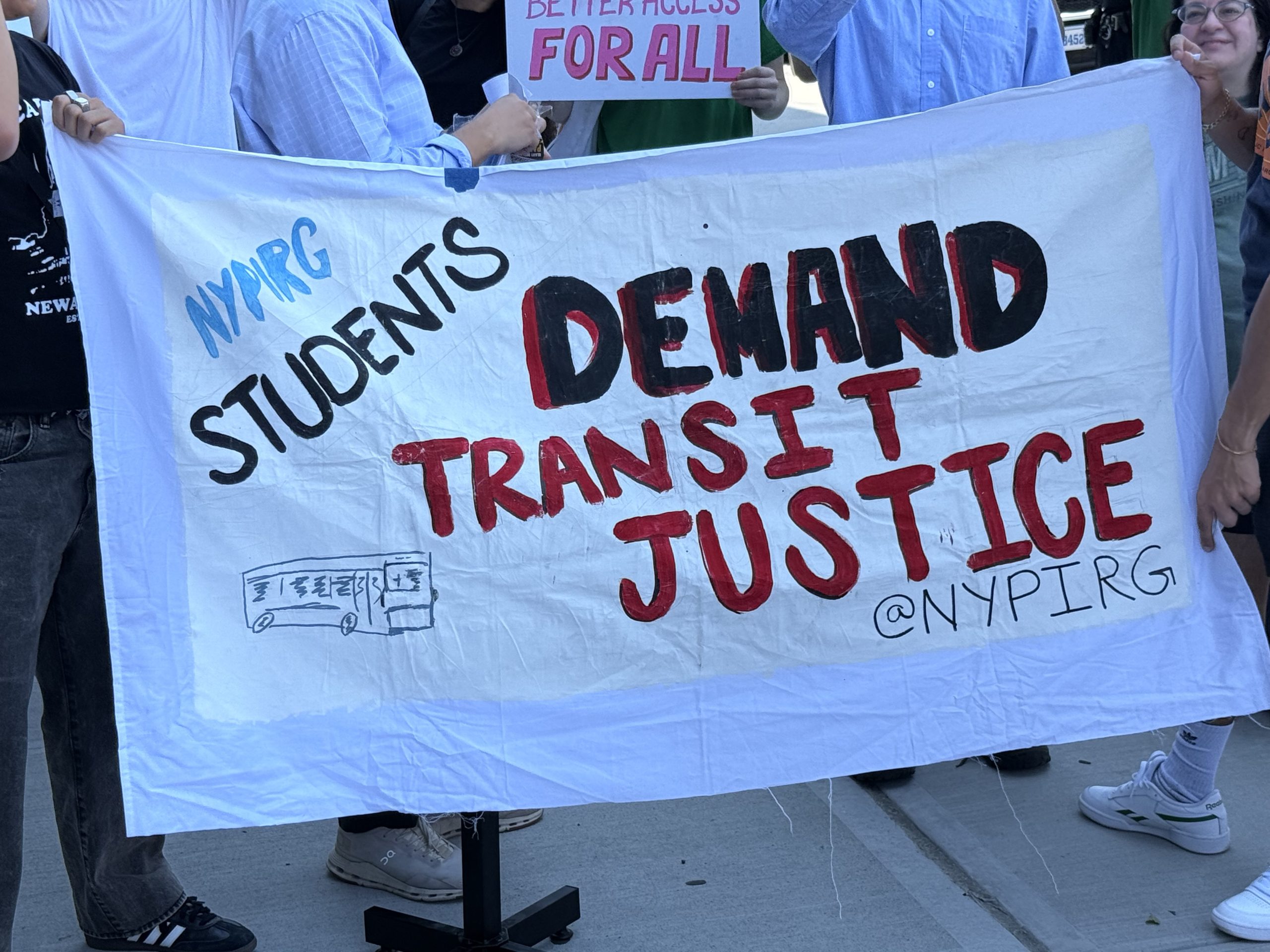 The initiative received a boost earlier this year when the New York State Senate included $10 million in its 2025 budget proposal to fund an environmental review of QueensLink. This move followed a sustained grassroots campaign led by QueensLink organizers, who mobilized supporters to send thousands of letters to elected officials urging support. Six state senators and seven assemblymembers signed on in favor of the project.
The initiative received a boost earlier this year when the New York State Senate included $10 million in its 2025 budget proposal to fund an environmental review of QueensLink. This move followed a sustained grassroots campaign led by QueensLink organizers, who mobilized supporters to send thousands of letters to elected officials urging support. Six state senators and seven assemblymembers signed on in favor of the project.
Still, the Assembly budget did not include funding for QueensLink, a disappointment to backers who say the plan has broad legislative support and a clear community mandate.
City officials and MTA representatives have emphasized that the QueensWay park plan does not preclude future transit use, but QueensLink advocates note that the MTA’s most recent 20-Year Needs Assessment gave the QueensLink proposal a low priority, citing QueensWay as a competing interest.
Edward, known online as the creator behind the YouTube page Joint Transit Association, voiced enthusiastic support for QueensLink, calling it “a good project” and making clear there is “absolutely no way with QueensWay.” Citing his own successful advocacy that helped push the MTA to consider swapping the F and M trains between the 63rd and 53rd Street tunnels, he highlighted the power of public pressure and grassroots organizing.
Edward criticized the lack of transit infrastructure in Queens, saying, “We only have the equivalent of, like, what, two and a half train lines, maybe three on a good day when the N or W aren’t shutting down.” He argued that QueensLink would provide the critical north-south service the borough is missing and could cut travel times by 15 to 30 minutes for riders throughout Queens.
He emphasized that the project is a necessary, scalable transit solution for a growing borough, saying, “We need National Transit solutions, not a Walmart High Line that will block trains on the route.” He pushed back on the idea that rail and park space are mutually exclusive: “We can do both rails and trails,” he said. Ending on a hopeful note, he praised the report released at the event for backing up what transit advocates have long claimed, and declared, “I am proud to support this transit revolution.”
The rally drew a diverse crowd of students, community leaders, and transportation experts who stressed that expanding transit options in Queens is critical to addressing the borough’s growth and longstanding inequities.
